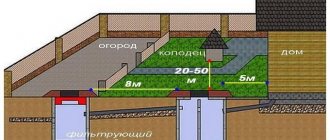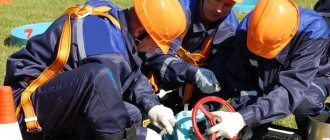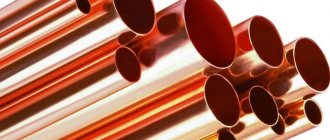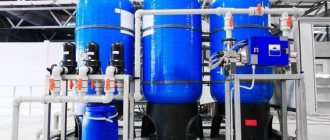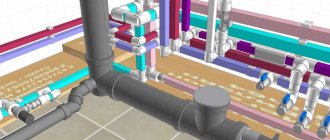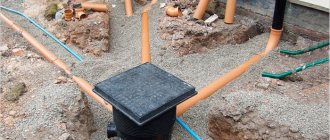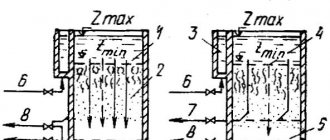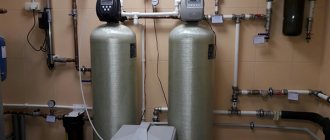Recently, an updated procedure has been established for how the composition and properties of wastewater are monitored. The main document that lists the updates is Decree of the Government of the Russian Federation No. 728 dated May 22, 2020. In addition, this Decree introduced some changes to certain regulations. Without a doubt, this is a fairly significant change in environmental legislation; there are many questions.
The question remains relevant of how the control of wastewater sent to the centralized wastewater system (CSS) will now be carried out, because the previous Rules have lost force. We have studied the innovations and in this material we will try to pay attention to the main aspects of this issue.
- Who controls the composition and properties of wastewater?
- What has changed in drainage in 2021?
- What does monitoring the composition and properties of wastewater include in 2020?
- Frequency of water disposal control
- Fines for water users
Who controls the composition and properties of wastewater?
On May 22, 2021, Decree of the Government of the Russian Federation dated May 22, 2020 No. 728 was adopted, which amended the rules for cold water supply and wastewater disposal and approved new rules for monitoring the composition and properties of wastewater.
According to paragraph 1 of Art. 30.3 of the Federal Law of December 7, 2011 No. 416-FZ “On Water Supply and Wastewater Disposal”, the organization that carries out wastewater disposal is responsible for monitoring the composition and properties of wastewater. Or another organization authorized by it.
The subject of control is the composition and properties of wastewater, which are physical and legal. persons who have entered into a water supply and sanitation agreement are sent to the central sewerage system (CSV).
Classification and degree of sewage water pollution
Depending on the origin, sewage can be:
- industrial;
- household;
- atmospheric.
Industrial sewerage is discharged through industrial sewerage, household sewerage is discharged through utility sewerage, and surface sewerage is discharged through stormwater drainage. In addition, regardless of the type, they can be dumped into a general alloy.
Household products contain mineral, organic, and biological substances. Industrial classify:
- according to the composition of the pollutant;
- concentrations of harmful substances;
- by pollution properties;
- acidity;
- toxicity.
Stormwater is contaminated with minerals and has a constant composition. Therefore, analysis of storm water is done to determine the extent of the impact of pollution on the environment.
What has changed in drainage in 2021?
It is known that until June 3, 2021, the Rules for monitoring the composition and properties of wastewater, approved by Decree of the Government of the Russian Federation of June 21, 2013 No. 525, were considered valid.
Now, the previously existing rules have been replaced by new rules approved by Decree of the Government of the Russian Federation of May 22, 2020 No. 728.
The main difference between the new rules and the already outdated ones: previously, subscribers were divided into two categories:
- Subscribers for whose objects the VAT of pollutants (PS), or other substances and microorganisms is established in the CSV;
- Subscribers for whose facilities standards for permissible discharges into the central water supply system are not established.
Now the composition and properties of wastewater discharged by all subscribers in the sewer system are subject to control; subscribers are not divided into categories “with VAT” and “without VAT”. Previously, control was carried out in accordance with a special program for monitoring the composition and properties of wastewater. It was developed in accordance with Rules No. 525. This program included a list of subscribers for whose facilities standards for permissible discharges were established (by subscriber category).
Maximum permissible discharges into water bodies
The new Rules No. 728 no longer contain the development and approval of a program for monitoring the composition and properties of wastewater. Thus, VAT is not established for subscribers who have facilities that discharge into the central heating system. There is no need to develop and approve a program for monitoring the composition and properties of wastewater.
Mandatory wastewater compliance criteria are now:
- Actual indicators of the composition and properties of wastewater, which are included in the Declaration on the composition and properties of wastewater
and/or
- Standards for the composition of wastewater, requirements for the composition and properties of wastewater discharged to the central wastewater treatment plant, established by the Rules for cold water supply and wastewater disposal, approved by Decree of the Government of the Russian Federation of July 29, 2013 No. 644.
Thus, for CSV subscribers, the requirements for parallel sampling have been transformed, and requirements for “visual inspection” have been established. The old Rule No. 525 has been permanently repealed. In addition, the Rules for charging fees for the discharge of wastewater and pollutants into the sewerage systems of populated areas have been abolished. Significant changes have also affected the Rules for cold water supply and sanitation.
1.1.Classification of wastewater
Wastewater from industrial enterprises, depending on the conditions of formation, is divided into three main groups:
— Industrial wastewater. Their presence is directly related to the production of products or the operation of technological equipment. These waters, in turn, should be divided into technical and technological.
Industrial wastewater results from the use of water to ensure the normal operation of process equipment (for example, cooling).
Process wastewater is formed as a result of the use of water in technological processes (for example: hydrotransport, reagent solutions, etc.)
— Domestic wastewater. Formed as a result of the use of water for domestic purposes (i.e. water from sanitary facilities, showers, etc.)
— Atmospheric (surface) wastewater. They are the result of precipitation (rain and melt). This group should include water used for watering lawns, driveways, as well as for washing buildings, etc.
Based on the degree of contamination, wastewater can be of two categories:
- contaminated, i.e. the discharge of which into a water body or drainage network of a populated area without preliminary treatment is prohibited;
— uncontaminated (conditionally clean), i.e. the discharge of which into a water body or drainage network of a populated area, under these conditions, is permitted without pre-treatment.
Depending on its purpose, water in industrial water supply systems is divided into 4 categories:
Category I - water is used for cooling liquid and condensation of gaseous products in heat exchangers without contact with the product, as well as water used for cooling technological equipment; the water is heated, but practically not polluted (contamination of such water with chemicals is observed as a result of accidents or malfunctions of heat exchangers and technological equipment);
Category II - water is used as a medium that absorbs various insoluble (mechanical) and dissolved impurities; at the same time it does not heat up, but is contaminated with mechanical and dissolved impurities (for example: mineral processing, hydrotransport);
III category - water is used in the same way as water of category II; at the same time it becomes polluted and heated (for example: capturing and purifying gases in scrubbers, slaking coke, etc.)
Category IV - water is used as a solvent for reagents or an extractant (for example: during flotation enrichment of natural resources), etc.
What does monitoring the composition and properties of wastewater include in 2021?
After Regulation No. 728 came into force, wastewater control includes the following steps:
- Conducting wastewater sampling;
- Further analysis of collected wastewater samples;
- Visual control (more precisely, this means checking objects for compliance with the requirement to prohibit discharge into a centralized drainage system).
Please note that visual control is a new stage. It is carried out in accordance with Rules No. 644 and Rules No. 728 on substances, waste, wastewater, for which verification of compliance with the requirements for banning said discharge is possible without sampling wastewater and further analyzing it. This procedure is carried out if prohibited discharges into the central heating system can be visually detected. These substances are in the list of Appendix No. 4 to Rules No. 644.
The actual indicators of wastewater are determined using special sampling equipment, which is installed by the organization carrying out wastewater disposal.
We invite you to familiarize yourself with what the wastewater sampling report form is.
Visual inspection, wastewater sampling and analysis of collected wastewater samples
We propose to dwell in a little more detail on what visual control is, as well as such control stages as wastewater sampling and analysis of already collected samples.
Who is responsible for each stage of wastewater control?
- Visual control is carried out by the wastewater disposal organization;
- According to special requirements, wastewater sampling is carried out by an accredited laboratory or wastewater disposal organization;
- Also, an accredited laboratory analyzes already collected samples.
Requirements for subscribers:
- Provide the opportunity to conduct visual inspection and sampling of wastewater;
- Provide free access to water for monitoring;
- Give the wastewater organization free access to the sewerage system;
- Provide places for sampling wastewater and install special signs that will identify control sewer wells (they should not interfere with the installation of equipment);
- The subscriber or his representative must be present during visual inspection.
The form of the act of detecting the fact of discharge of substances that are prohibited for discharge into the water supply center.
contents .. 1 2 3 ..1.3.
Wastewater quality indicators
To determine the composition
wastewater is carried out sanitary-chemical
analysis
according to
the following indicators
:
- temperature;
- color, degrees;
— smell, points, — an organoleptic indicator characterizing the presence of odorous substances in water. The smell is determined qualitatively at a temperature of 20°C and is described as putrid, fishy, grassy, earthy, musty;
— pH – hydrogen index (negative logarithm of the concentration of hydrogen ions);
— transparency, cm, characterizes the degree of contamination of wastewater with undissolved and colloidal impurities;
— dry residue, mg/l (total mineralization), characterizes the concentration of dissolved organic and mineral impurities in wastewater. The dry residue is determined by evaporating a certain volume of the filtered sample and then drying the residue at a temperature of 110 - 120°C;
— dense residue, mg/l, is the total content of organic and mineral substances in an unfiltered wastewater sample. The indicator is determined after evaporation and drying of wastewater samples at a temperature of 110 - 120°C;
— calcined residue (ash content), mg/l, characterizes the content of mineral substances in water; it is determined by calcining the dry residue at a temperature of 800°C. During calcination, organic substances burn and carbonates partially decompose;
— suspended substances, mg/l, — large particles (with a diameter of more than 10-4 cm) retained by paper filters. They characterize water contamination with clay, sand, and various silicate rocks;
- oxidability mg O2/l, - an indicator characterizing the total content of oxidizable substances in water, determined by the consumption of the oxidizing agent - oxygen.
Let us dwell in more detail on one of the most important indicators of wastewater quality – oxidability. Under oxidability
of organic and inorganic
reducing agents in water This is a value characterizing the content of organic and mineral substances in water that are oxidized by one of the strong chemical oxidizing agents under certain conditions.
Organic
in urban
wastewater , therefore the entire oxidation value is attributed to organic impurities of water.
Oxidability is a group indicator
.
Depending on the nature of the oxidizing agent used, are distinguished
.
The results of determining oxidability, regardless of the type of oxidizer, are expressed in mg/l O2.
When determining chemical
oxidability using a chemical oxidizing agent.
The COD value is determined by heating organic compounds with chemically pure concentrated sulfuric acid, to which potassium iodate or chromic acid salts are added, which give up their oxygen for oxidation. Chemical oxidation can be permanganate
(oxidizing agent KMnO4),
dichromate
(oxidizing agent potassium bichromate K2Cr2O7) and
iodate
(oxidizing agent potassium iodate KIO3).
The highest degree of oxidation is achieved by dichromate and iodate water treatment methods. Dichromate and iodate oxidizability are otherwise called chemical
oxygen demand
(COD
).
In this case, the amount of oxygen
required to oxidize water impurities is estimated.
By determining COD, it is possible to fairly fully assess the degree of water contamination with organic substances. However, experimental
The COD is often less than
the theoretical value
calculated using the stoichiometric oxidation equation, since a number of organic substances (dyes, surfactants, complex hydrocarbons, etc.) are not completely oxidized or are not oxidized at all.
Permanganate
oxidability is the oxygen equivalent of easily oxidized impurities. This indicator is determined quickly and easily in order to obtain comparative data.
If potassium permanganate (KMnO4) is used as an oxidizing agent in the analysis, then the so-called permanganate oxidation
, expressing it in conventional terms for oxygen - the number of milligrams of oxygen spent on the oxidation of impurities contained in 1 liter of water.
The most complete oxidation is achieved by potassium dichromate, therefore dichromate
oxidation is called chemical oxygen demand (
COD
).
If oxidation is carried out with the participation of aerobic bacteria, then the biochemical oxygen demand ( BOD)
) – the amount of oxygen consumed for the biochemical oxidation of pollutants during the life of aerobic bacteria, expressed by the O2 concentration in mg/l or g/m3.
This indicator is determined at a temperature of 20°C for 20 days and is designated BOD20
(for many types of wastewater BOD20 = BODtotal), and for 5 days -
BOD5
.
Biochemical oxygen demand (BOD)
is the amount of oxygen required for the oxidation of organic substances by aerobic microorganisms during their life processes.
Usually, the biochemical demand for oxygen is determined for 5 and 20 days
, denoting it BOD5 and BOD20, respectively.
BOD
does not characterize the total amount of organic substances in wastewater, because
it does not take into account
organic substances used for bacterial growth, as well as persistent organic substances not affected by the biochemical process. The BOD value is remarkable in that it almost exactly coincides with the true oxygen consumption for the purification process in existing facilities.
Biological oxygen demand – indicator
water pollution, characterizing the ability of bacteria to digest organic substances: BOD5 determines the amount of oxygen that, over a set time (5 days) at a temperature of 25 ° C, went to oxidize the pre-inoculated sample. A time of 5 days is sufficient for the biological oxidation of the fraction of carbon-containing organic substances found in urban wastewater. Typically, during this time, oxidation of organic or ammonium nitrogen occurs. Complete aerobic treatment requires 20 days (BOD20), the time required to oxidize complex nitrogen-containing biodegradable compounds such as proteins and proteins.
Biochemical oxidation of different substances occurs at different rates
.
Easily oxidizing
(“biologically soft”) substances include formaldehyde, lower aliphatic alcohols, phenol, furfural, etc.
The middle
position is occupied by cresols, naphthols, xylenols, resorcinol, anionic surfactants, etc. “biologically
hard
” substances, such as hydroquinone, are slowly destroyed, sulfonol, nonionic surfactants, etc.
Full
biochemical oxygen demand (BOD) is the amount of oxygen required to oxidize organic impurities before the onset of nitrification processes. The amount of oxygen consumed to oxidize ammonia nitrogen to nitrites and nitrates is not taken into account when determining BOD. For domestic wastewater (without significant industrial admixtures), BOD20 is determined, assuming that this value is close to BODp.
An important indicator
, characterizing the ability of wastewater contaminants to undergo biochemical oxidation, is the ratio
BODtotal/COD
.
The higher this ratio, the larger part of the organic impurities in wastewater can be removed during the biological treatment process. It is believed that the use of biological
methods is advisable at
BODtotal/COD0.5.
For
municipal
wastewater, BOD20 is approximately 86% of COD, for
industrial
wastewater it is 25–80% of COD.
In household
and industrial wastewater similar in composition consumes about 21% of oxygen in the first day, about 87.5% in 5 days, and 100% of the oxygen required for oxidation in 20 days. For domestic wastewater, BOD20 is 86% COD, but many industrial wastewaters have COD higher than BOD20 by 50% or more.
Attitude
BODtotal and COD values characterize the ability of wastewater impurities to undergo biochemical oxidation. For wastewater that has undergone biological treatment, the ratio of BODtotal and COD values decreases significantly, which indicates the removal of biologically oxidizable substances.
oxygen dissolved in water
is important for assessing the sanitary condition of a reservoir; If there are pollutants in wastewater, the amount of dissolved oxygen decreases, as it is spent on the oxidation of these substances.
To quality indicators
wastewater also includes:
— nitrogen (total – N, ammonium – NH4+, nitrite – NO2-, nitrate – NO3-);
- phosphates;
- chlorides;
- sulfates;
- heavy metals;
— surfactant;
— petroleum products;
- dissolved oxygen. oxygen dissolved in water
is important for assessing the sanitary condition of a reservoir; If there are pollutants in wastewater, the amount of dissolved oxygen decreases, as it is spent on the oxidation of these substances.
Microbial number
– the number of bacteria per unit volume is a sanitary-bacteriological indicator characterizing the total contamination of wastewater with microorganisms.
If the wastewater contains characteristic
For a given enterprise or city of ingredients, an analysis is carried out to determine the content of these substances.
As a rule, in large and medium-sized cities of the country, industrial and domestic wastewater is discharged into the city drainage network
for further joint treatment at city treatment plants (biological treatment). In this regard, in order to ensure sustainable operation of the city’s wastewater treatment plants, water-using enterprises are required to meet the quality requirements of discharged wastewater.
contents .. 1 2 3 ..
Frequency of water disposal control
Control can be planned or unscheduled. Let's look at its differences.
Scheduled control is carried out no more than once per calendar month and less than once per calendar year. An exception is for subscribers whose facilities discharge a volume of less than 30 cubic meters per day in general (if wastewater is discharged into the sewer system). The frequency of planned control in this case cannot be more than once a calendar month.
As for unscheduled control, it is mandatory if:
- An accident has occurred, or the central heating system or its elements have failed;
- During state environmental supervision, violations were identified and orders were received to eliminate them;
- The water body was contaminated by the water supply system at the point where wastewater was discharged into it.
Carrying out analysis
All wastewater discharged into natural bodies of water has a strong impact on this biosphere:
- Stimulate eutrophication;
- Change in biocenosis;
- Death of individual biological individuals;
- Other negative manifestations.
Sources of wastewater generation are residential, industrial, social and other facilities (apartments, schools, medical institutions, gas stations, etc.).
Environmental supervision is constantly improving the regulatory framework for monitoring compliance with sanitary cleaning standards by enterprises. These measures are necessary to preserve the hydrosphere and maintain the ecological balance of a particular territory.
Most often, samples of domestic and industrial wastewater that go directly to treatment plants and facilities are examined. The quality of discharges is determined by samples from final streams that are sent for treatment.
The simplest sample analyzes determine the following wastewater parameters:
1) color;
2) level of transparency;
3) temperature;
4) presence of odor.
All wastewater has a high temperature, poor transparency and a specific odor. The more harmful the production, the more intensely the discharge is colored.
Chemical indicators of wastewater sample analysis:
- pH level. Municipal wastewater has a neutral reaction, and the pH level of industrial sewage can vary from highly acidic to highly alkaline. After filtration and purification, all discharges must have a neutral reaction;
- Dry residue, which is taken from unfiltered samples. This criterion shows the content of suspended (lime, ore, etc.) and dissolved impurities in the wastewater. Removal of suspended impurities occurs using mechanical water treatment methods, for example, sedimentation. All urban wastewater has a sedimentation level of 65 to 75%;
- Determination of ash content of solid types of impurities. It is found by calculation: the dry residue calcined to +600ºС is divided by the initial weight of the analyzed sample. The ash content indicator is calculated as a percentage. City sewer discharges have 25 to 35% solid ash content;
- The value of oxidizability determined by the action of aerobic bacteria and chemical reactions on wastewater.
Also key parameters of wastewater purity are the level of nitrogen and phosphorus compounds, sulfates and chlorides, surfactants and toxic substances. Biological wastewater pollutants – bacteria, viruses, pathogenic protozoa, helminth eggs.
The last indicator identified during the analysis of waste discharge samples is the level of dissolved oxygen. The standard parameter is 8 mg/liter of wastewater.
Conclusions: analysis of wastewater samples is required when drawing up a plan for treatment plants, assessing the efficiency of its operation and checking the quality of treatment of incoming wastewater. All studies are carried out by specialists in special laboratories using precision equipment.
Fines for water users
View fines for water users
The size of fines for water users depends on the nature of the violation. Water pollution can even threaten the water user with criminal liability. Fines will not affect you only if you comply with environmental legislation and have all the permits required by the enterprise. EcoPromCenter specialists will help you with any issue of water use!
At the time of writing, changes are still being made. For subscribers with wastewater disposal of less than 30 cubic meters per day, the fee is 20,000 rubles/month. In addition, it is planned to introduce a new service regarding payment for environmental damage to wastewater networks. It should be taken into account that it is necessary to wait for the final results of the changes to fully understand how water users will have to report.
Types of research
To determine the quality of sewage, various types of studies are used that help determine the composition of pollutants and their concentration. The results of the study help to correctly assess the sanitary and environmental situation and choose a treatment system.
Sewage discharges are analyzed using the following methods:
- chemical;
- microbiological;
- toxicological;
- sanitary and hygienic;
- radiological.
Not only production, but also wastewater from household plots are subject to research. To quickly determine the chemical composition, an express method is used.
Microbiological method
For microbiological research, the ATP method, titration, plate counting, and membrane filtration are used. Using LHC analysis, the number of pathogenic microorganisms, coliform bacteria, and staphylococci is determined. The results of the study are used to determine the cleaning method.
Chemical method
In chemical research, the gravimetric and volumetric methods are used. Using chemical analysis, the following is determined:
- acidity;
- toxicity;
- transparency;
- weighted remainder.
COD, BOD data are used to determine oxygen demand. During the chemical study, compliance with MAC standards is determined.
Chemical analysis of wastewater
Analysis of wastewater on a personal plot
Runoff from household plots causes soil pollution. They pose a potential danger not only to this area, but also to neighboring ones. Therefore, owners of household plots are recommended to use the full chemical method.
The results will help you avoid contamination and choose and equip a suitable septic tank. This helps eliminate unpleasant odors.
